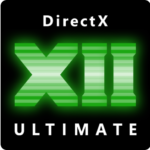I remember those thread where people refused to see reason when talking about this. That 2x multiplier people keep talking about applies to all GPUs that support SF when applied to PRT or TSS.
Sampler feedback is a new feature in DirectX 12 Ultimate. Sampler feedback enables more efficient ways of handling textures and shading by recording data on texture sampling and locations.
In 3D graphics, texture space shading is a technique that allows for shading to be applied in texture space, producing a shading map similar to material textures, rather than in screen space on the visible pixels. This allows for performance optimizations such as reusing shading from the previous frames or performing some of the shading at a lower detail level. Texture space shading can also reduce the impact of artifacts such as flickering specular highlights through improved texture filtering.
Sampler feedback can be used to optimize texture space shading. Regions and details in the texture space that won’t be visible on-screen can be skipped when shading through the use of sampler feedback, resulting in an increase in shading performance.
Using sampler feedback in this process is faster than generating the same information through custom shaders.
Test sampler feedback performance with 3DMark
The 3DMark Sampler Feedback feature test shows how game engines can improve performance by using sampler feedback to optimize texture space shading.
The test scene is a robot repair shop. Texture space shading is used to shade the scene as the camera moves around the environment.
The test runs in two passes. In the first pass, the scene uses texture space shading and a custom software solution that generates information about which texels require shading. In the second pass, sampler feedback is used to optimize the texture space shading operations by more efficiently identifying the texels that are being accessed.
The result of the test is the average frame rate for each pass and the difference between the two expressed as a percentage.
Sampler Feedback feature test design
The 3DMark Sampler Feedback feature test uses sampler feedback to generate information about which texels require shading.
The test shows how game engines can improve performance by using sampler feedback as part of texture space shading to more efficiently shade texture regions based on whether they’re sampled in the final output or not.
The test scene is a broken robot in a repair shop and runs in two passes. As the camera moves around the scene, texture space shading is used to optimize the shading of the scene.
The test uses a pre-generated set of maps that defines the required information for shading each texel of the shading map in texture space.
In the first pass, we shade using texture space shading without sampler feedback, using a software solution developed in-house to determine the sampled texels along with a matching software sampler in the screen space sampling pass.
The second passes uses the sampler feedback feature to determine the MIP levels and MIP regions that will be sampled for each frame, shading only them in texture space and sampling the shading map in screen space to produce the final image.
The frame rates of running the test in each mode are recorded, and the result is the relative difference between performing texture space shading with and without the sampler feedback feature.








